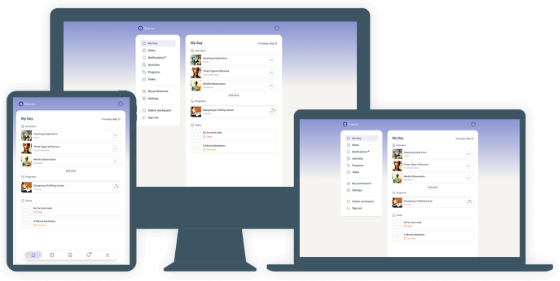In the dynamic world of leadership, staying ahead requires more than just experience and intuition. Enter Neuro-Linguistic Programming (NLP), a powerful set of techniques that can transform your leadership style and effectiveness. NLP offers leaders a toolkit to enhance communication, influence, and personal development, ultimately leading to more inspired and productive teams [1].
By incorporating NLP techniques into your leadership practice, you can expect to see improvements in self-awareness, relationship building, and problem-solving abilities. These benefits not only enhance your personal leadership journey but also create a positive ripple effect throughout your organization. As we delve deeper into the world of NLP and its applications in leadership, prepare to unlock new potentials and discover innovative ways to inspire and guide your team towards success.
Understanding Neuro-Linguistic Programming (NLP) in Leadership
Neuro-Linguistic Programming, at its core, is an approach to communication, personal development, and psychotherapy that focuses on the connection between neurological processes, language, and behavioral patterns learned through experience [2]. In the context of leadership, NLP provides a framework for understanding how we process information, communicate with others, and achieve our goals.
The fundamental premise of NLP is that our neural (neuro), linguistic (language), and behavioral (programming) patterns are interconnected and can be modified to achieve specific outcomes. For leaders, this means that by understanding and applying NLP principles, they can enhance their communication skills, influence more effectively, and create positive change within themselves and their teams.
In leadership roles, NLP techniques can be applied in various ways:
- Improving communication: Leaders can use NLP to adapt their communication style to better resonate with different team members, ensuring their message is understood and embraced.
- Enhancing emotional intelligence: NLP techniques can help leaders become more aware of their own emotions and those of others, leading to improved relationships and team dynamics.
- Goal setting and achievement: NLP provides tools for setting clear, achievable goals and creating effective strategies to reach them.
- Conflict resolution: Leaders can use NLP techniques to navigate and resolve conflicts more effectively, fostering a more harmonious work environment.
- Personal development: NLP offers methods for continuous self-improvement, allowing leaders to grow and adapt to new challenges.
By integrating NLP principles into their leadership approach, managers and executives can develop a more nuanced understanding of human behavior and motivation, leading to more effective and inspiring leadership [3].
Key NLP Techniques for Effective Leadership
To harness the power of NLP in leadership, it’s essential to understand and practice key techniques. These tools can significantly enhance your ability to connect with, influence, and inspire your team. Let’s explore four fundamental NLP techniques that every leader should master:
| NLP Technique | Leadership Application |
|---|---|
| Rapport Building | Establishing trust and connection with team members |
| Anchoring | Accessing resourceful states for confident decision-making |
| Reframing | Transforming challenges into opportunities |
| Modeling Excellence | Adopting successful behaviors of top performers |
Rapport Building
Rapport building is the foundation of effective communication and relationship management. In NLP, rapport is established by matching and mirroring the other person’s body language, tone of voice, and language patterns. This technique creates a sense of familiarity and trust, making others more receptive to your ideas and leadership [4].
To build rapport:
- Observe and subtly mirror body posture and gestures
- Match the pace and tone of speech
- Use similar language patterns and vocabulary
Anchoring
Anchoring is a technique that associates a specific stimulus (like a touch or a word) with a particular emotional state or response. Leaders can use anchoring to access resourceful states in themselves and to help team members recall positive emotions or experiences when needed.
To use anchoring:
- Identify a positive state you want to anchor (e.g., confidence)
- Choose a unique anchor (e.g., touching your thumb and forefinger together)
- Intensify the positive state and apply the anchor
- Test the anchor by reapplying it and observing the response
Reframing
Reframing is the process of changing the way a situation, experience, or behavior is perceived by putting it in a different context or “frame.” This technique is particularly useful for problem-solving and helping team members overcome limiting beliefs.
To apply reframing:
- Identify the current frame or perspective
- Consider alternative viewpoints or contexts
- Present the situation in a new, more empowering frame
Modeling Excellence
Modeling excellence involves studying and replicating the behaviors, strategies, and mindsets of highly successful individuals. This technique allows leaders to adopt and integrate effective practices into their own leadership style [5].
To model excellence:
- Identify a person who excels in the area you want to improve
- Observe and analyze their behaviors, language patterns, and strategies
- Practice and integrate these elements into your own approach
- Refine and adapt the modeled behaviors to fit your unique style
By mastering these key NLP techniques, leaders can significantly enhance their ability to communicate effectively, inspire their teams, and navigate complex leadership challenges. As you incorporate these tools into your leadership practice, you’ll likely notice improvements in team cohesion, motivation, and overall performance.
Enhancing Communication Skills with NLP
Effective communication is the cornerstone of successful leadership, and NLP offers powerful tools to enhance this critical skill. By understanding and applying the NLP Communication Model, leaders can dramatically improve their ability to convey ideas, listen actively, and foster understanding within their teams.
The NLP Communication Model is based on the premise that our internal representations of the world significantly influence how we communicate and interpret information. This model emphasizes three main components: Visual (what we see), Auditory (what we hear), and Kinesthetic (what we feel) [6].
| Component | Description | Example Phrase |
|---|---|---|
| Visual | What we see or imagine | “Let’s look at this from a different perspective” |
| Auditory | What we hear or think about hearing | “This idea resonates with our goals” |
| Kinesthetic | What we feel or sense | “Let’s grasp the core of this issue” |
To leverage this model and enhance your communication skills:
- Identify Preferred Communication Styles:
- Observe the language patterns and behaviors of your team members
- Notice if they use predominantly visual, auditory, or kinesthetic words and phrases
- Adapt your communication style to match their preferences
- Use Sensory-Rich Language:
- Incorporate words and phrases that appeal to all senses
- For visual communicators, use phrases like “Let’s look at this from a different perspective”
- For auditory communicators, try “This idea resonates with our goals”
- For kinesthetic communicators, say “Let’s grasp the core of this issue”
- Practice Active Listening:
- Pay attention to both verbal and non-verbal cues
- Reflect back what you’ve heard to ensure understanding
- Ask clarifying questions to delve deeper into the speaker’s message
- Develop Flexibility in Your Communication Approach:
- Be prepared to shift your communication style based on the situation and audience
- Use a mix of communication channels (e.g., verbal, written, visual aids) to cater to different preferences
- Utilize the Meta Model:
- The NLP Meta Model is a set of language patterns and questions designed to clarify and challenge vague or distorted information
- Use specific questions to uncover hidden assumptions and gather more precise information
- For example, when someone says “They never listen,” ask “Who specifically doesn’t listen, and what makes you think they’re not listening?”
By incorporating these NLP-based communication strategies, leaders can create a more inclusive and effective communication environment. This not only improves understanding and collaboration within the team but also enhances the leader’s ability to influence and inspire [7].
Remember, effective communication is not just about transmitting information; it’s about ensuring that your message is received and understood as intended. By adapting your communication style to match your audience’s preferences and using NLP techniques to clarify and enrich your messages, you’ll be well on your way to becoming a more effective and inspiring leader.
Developing Influential Leadership Skills Through NLP
Influence is a crucial aspect of effective leadership, and NLP provides powerful tools to enhance this skill. By mastering NLP techniques, leaders can significantly improve their ability to persuade, motivate, and inspire their team members [8].
One key aspect of influential leadership is the use of persuasive language patterns. NLP offers several language models that can enhance a leader’s persuasive abilities:
- The Milton Model: This model, based on the work of hypnotherapist Milton Erickson, uses intentionally vague language to bypass conscious resistance and speak directly to the unconscious mind. Leaders can use this to create a sense of possibility and inspire creative thinking.
- Presuppositions: These are implicit assumptions embedded in language. By carefully crafting statements that presuppose positive outcomes, leaders can influence team members’ expectations and behaviors.
- Metaphors and Analogies: These powerful linguistic tools can simplify complex ideas and make them more relatable and memorable.
Another crucial element of influential leadership is the effective use of non-verbal cues. NLP emphasizes the importance of congruence between verbal and non-verbal communication. Leaders can enhance their influence by:
- Maintaining consistent eye contact
- Using confident and open body language
- Modulating voice tone and pace to match the message’s emotional content
By integrating these NLP-based influence techniques, leaders can significantly enhance their ability to guide their teams, gain buy-in for new ideas, and create a compelling vision for the future [9].
Boosting Emotional Intelligence with NLP Techniques
Emotional intelligence (EI) is a critical component of effective leadership, and NLP offers valuable techniques to enhance this crucial skill. By developing emotional intelligence, leaders can better understand and manage their own emotions while empathizing with and influencing the emotions of others [10].
NLP techniques that can boost emotional intelligence include:
- Self-awareness exercises: NLP provides tools like “perceptual positions” that allow leaders to view situations from different perspectives, enhancing self-awareness and empathy.
- Anchoring positive states: This technique helps leaders access resourceful emotional states when needed, improving emotional self-management.
- Rapport building: As mentioned earlier, this NLP technique enhances a leader’s ability to connect with others, a key component of social awareness and relationship management in EI.
- Reframing negative experiences: This NLP skill helps leaders and team members find positive aspects in challenging situations, promoting resilience and optimism.
By incorporating these NLP techniques, leaders can significantly enhance their emotional intelligence, leading to improved team dynamics, more effective conflict resolution, and a more positive work environment [11].
Problem-Solving and Conflict Resolution Using NLP
NLP offers powerful tools for problem-solving and conflict resolution, enabling leaders to navigate challenges more effectively. The reframing technique, in particular, is invaluable in this context.
Reframing involves changing the conceptual or emotional viewpoint in relation to a situation. In problem-solving, this might mean:
- Viewing a “problem” as an “opportunity for improvement”
- Considering a “failure” as a “learning experience”
- Seeing a “challenge” as a “chance to innovate”
For conflict resolution, NLP techniques can help leaders:
- Understand different perspectives using perceptual positions
- Identify common ground and shared objectives
- Use language patterns that de-escalate tension and promote collaboration
By applying these NLP strategies, leaders can transform conflicts into opportunities for growth and innovation, fostering a more positive and productive work environment [12].
Integrating NLP into Coaching and Mentoring Practices
NLP techniques can significantly enhance leadership coaching and mentoring practices. By incorporating NLP into these developmental relationships, leaders can more effectively guide their team members towards personal and professional growth [13].
Key NLP techniques for coaching and mentoring include:
- Goal-setting using the Well-Formed Outcome model
- Values elicitation to understand motivations
- Timeline techniques for personal development planning
- Modeling excellence to identify and replicate successful behaviors
By integrating these NLP techniques into coaching and mentoring sessions, leaders can create more impactful and transformative experiences for their team members, fostering a culture of continuous learning and development.
Conclusion
Incorporating NLP techniques into your leadership practice can lead to profound improvements in communication, influence, emotional intelligence, problem-solving, and coaching abilities. By mastering these powerful tools, you can unlock your full potential as a leader and inspire your team to achieve extraordinary results.
Remember, like any skill, NLP techniques require practice and refinement. As you begin to integrate these approaches into your leadership style, be patient with yourself and open to learning from each experience. Over time, you’ll find that NLP becomes a natural and invaluable part of your leadership toolkit, enabling you to navigate challenges with greater ease and inspire your team to new heights of success.
The journey to mastering leadership through NLP is ongoing, but the rewards – in terms of personal growth, team performance, and organizational success – are well worth the effort. Start implementing these techniques today, and watch as your leadership effectiveness transforms, creating a ripple effect of positive change throughout your organization.
Frequently Asked Questions
The time it takes to see results can vary depending on the individual and the specific techniques being implemented. However, many leaders report noticing improvements in their communication and influence within a few weeks of consistent practice. More significant changes in team dynamics and overall leadership effectiveness may become apparent within 3-6 months. It’s important to remember that NLP is a skill set that requires ongoing practice and refinement for optimal results.
While NLP can be a powerful tool for leadership, it’s important to use these techniques ethically and responsibly. Some potential concerns include the risk of manipulation if used with harmful intent, or the possibility of creating unrealistic expectations. Leaders should always prioritize transparency, respect for individual autonomy, and the well-being of their team members. It’s also crucial to recognize that NLP is not a substitute for genuine empathy, integrity, and sound decision-making in leadership.
NLP can complement many existing leadership models and approaches. For example, it can enhance emotional intelligence frameworks by providing specific techniques for self-awareness and empathy. NLP can also support transformational leadership by offering tools for inspiring and motivating teams. The key is to view NLP as a flexible toolkit that can be integrated with other leadership practices. Leaders should focus on identifying areas where NLP techniques can enhance their current approach and experiment with integrating these tools gradually.
While NLP was developed before many modern neuroscientific discoveries, recent research has provided support for some NLP concepts. For instance, studies on mirror neurons support the idea of rapport building through mirroring and matching. Neuroscience also validates the importance of emotional states in decision-making, aligning with NLP’s emphasis on state management. However, it’s important to note that not all NLP techniques have been scientifically validated, and leaders should approach NLP with a balance of openness and critical thinking.
Organizations can support leaders in adopting NLP techniques through several approaches. This might include providing access to NLP training programs or workshops, incorporating NLP concepts into existing leadership development initiatives, and offering coaching or mentoring to help leaders apply NLP techniques in their specific contexts. Organizations can also create opportunities for leaders to practice and share their experiences with NLP, fostering a culture of continuous learning and improvement in leadership skills.
References
- ^ Tosey, P., & Mathison, J. (2010). Exploring inner landscapes through psychophenomenology: The contribution of neuro-linguistic programming to innovations in researching first person experience. Qualitative Research in Organizations and Management: An International Journal, 5(1), 63-82. https://doi.org/10.1108/17465641011042035
- ^ Kotera, Y., & Sheffield, D. (2017). Disney strategy for Japanese university students' career guidance: A mixed methods pilot study. Journal of the National Institute for Career Education and Counselling, 38(1), 52-61. https://doi.org/10.20856/jnicec.3808
- ^ Linder-Pelz, S., & Hall, L. M. (2007). The theoretical roots of NLP-based coaching. The Coaching Psychologist, 3(1), 12-17. https://www.researchgate.net/publication/285047346_The_theoretical_roots_of_NLP-based_coaching
- ^ Wood, J. A. (2006). NLP revisited: Nonverbal communications and signals of trustworthiness. Journal of Personal Selling & Sales Management, 26(2), 197-204. https://doi.org/10.2753/PSS0885-3134260206
- ^ Tosey, P., & Mathison, J. (2010). Neuro-linguistic programming as an innovation in education and teaching. Innovations in Education and Teaching International, 47(3), 317-326. https://doi.org/10.1080/14703297.2010.498183
- ^ Lazarus, J. (2010). Successful NLP: For the results you want. Crimson Publishing.
- ^ Kong, E. (2012). The potential of neuro-linguistic programming in human capital development. The Electronic Journal of Knowledge Management, 10(2), 131-141. https://academic-publishing.org/index.php/ejkm/article/view/934
- ^ Vlok, A. (2012). A leadership competency profile for innovation leaders in a science-based research and innovation organization in South Africa. Procedia-Social and Behavioral Sciences, 41, 209-226. https://doi.org/10.1016/j.sbspro.2012.04.025
- ^ Tosey, P., Lawley, J., & Meese, R. (2014). Eliciting metaphor through clean language: An innovation in qualitative research. British Journal of Management, 25(3), 629-646. https://doi.org/10.1111/1467-8551.12042
- ^ Neale, S., Spencer-Arnell, L., & Wilson, L. (2011). Emotional intelligence coaching: Improving performance for leaders, coaches and the individual. Kogan Page Publishers.
- ^ Kotera, Y., & Van Gordon, W. (2019). Japanese managers' experiences of neuro-linguistic programming: a qualitative investigation. The Journal of Mental Health Training, Education and Practice, 14(3), 174-185. https://doi.org/10.1108/JMHTEP-06-2018-0033
- ^ Cheal, J. (2008). Exploring the role of NLP in the management of organisational paradox. Current Research in NLP, 1, 51-65. https://anlp.org/files/exploring-the-role-of-nlp-in-the-management-of_51_651.pdf
- ^ Linder-Pelz, S. (2010). NLP coaching: An evidence-based approach for coaches, leaders and individuals. Kogan Page Publishers.



